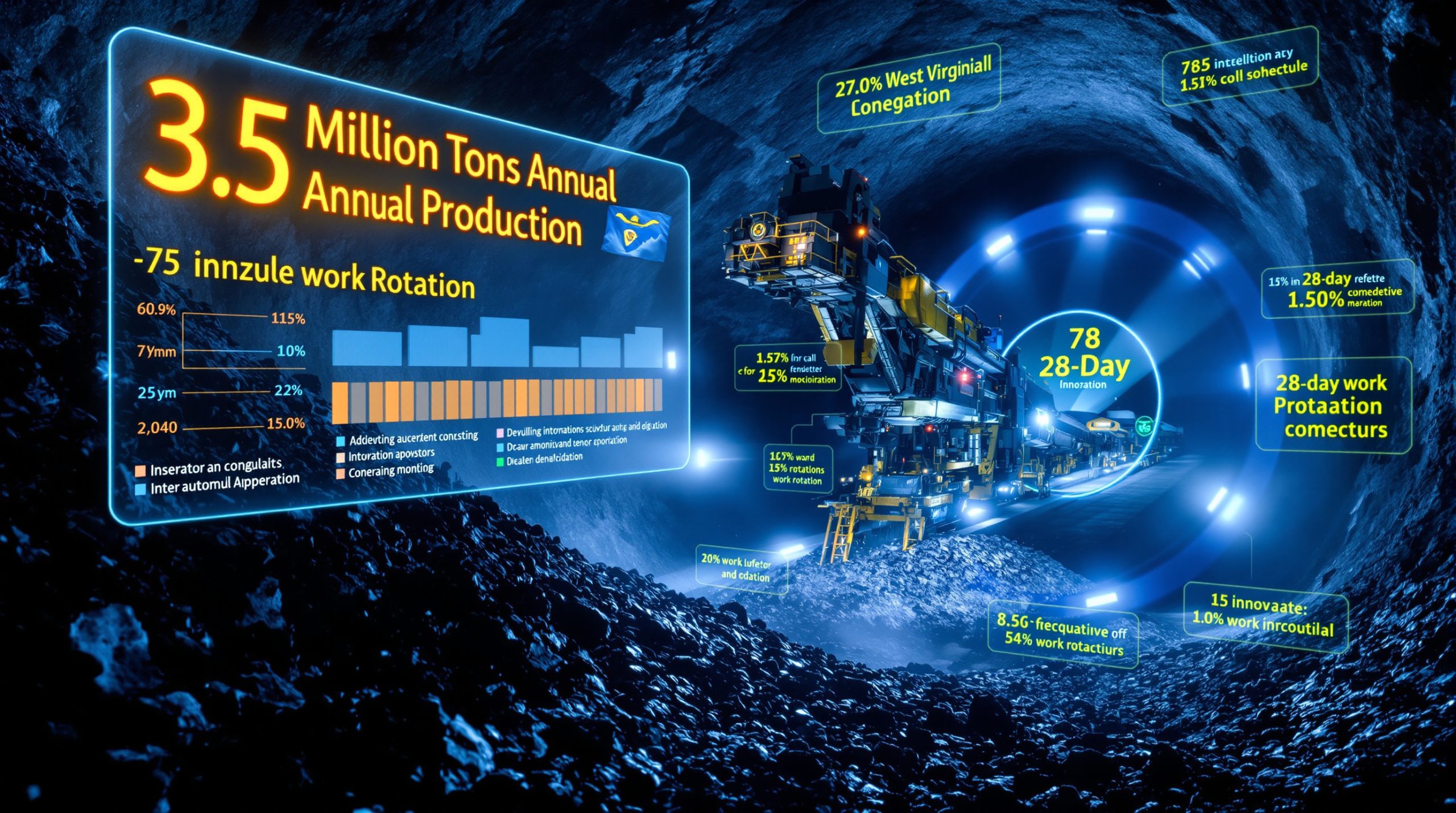Understanding the Current Gold Mining Investment Landscape
The precious metals sector is experiencing an unprecedented surge in gold miners investor interest, with mining equities capturing attention despite trading at elevated valuations. This phenomenon reflects a complex interplay of market forces that extends far beyond simple commodity price movements.
Market Dynamics Behind the Mining Sector Revival
Institutional capital has been flowing into mining equities at remarkable rates, driven by the sector's unique operational leverage characteristics. When gold prices surge to record levels, mining companies benefit disproportionately because their production costs remain relatively stable while revenues multiply exponentially.
The appeal of mining stocks over physical gold holdings lies in their amplified exposure to price movements. For instance, our recent gold prices analysis demonstrates how mining equities offer leveraged participation in gold's performance through the operational mechanics of extraction and production.
International investors, particularly from Asia-Pacific markets, have been increasingly active in this space. These sophisticated capital allocators recognise the strategic value of mining assets as inflation hedges and portfolio diversification tools during periods of monetary uncertainty.
Furthermore, the historic price surge has attracted significant institutional attention, with funds investing in gold miners basking in record prices, demonstrating the renewed confidence in the sector.
Valuation Paradox in Premium Markets
Despite gold reaching the $4,000 per ounce milestone in October 2025, many mining companies continue to trade at reasonable valuations relative to their enhanced cash flow generation capabilities. This apparent contradiction stems from the operational leverage inherent in mining operations.
The mathematics of mining profitability become compelling at elevated gold prices. Consider the following operational dynamics:
| Gold Price Level | Typical Mining Margin | Cash Flow Impact |
|---|---|---|
| $2,000/oz | 25-35% | Baseline |
| $3,000/oz | 45-55% | 2.5x increase |
| $4,000+/oz | 60-70% | 4x+ increase |
This margin expansion occurs because fixed costs in mining operations absorb a smaller percentage of revenue as commodity prices rise. Consequently, infrastructure, equipment, and labour costs remain largely constant, allowing additional revenue to flow directly to the bottom line.
Geographic Distribution of Investment Opportunities
Mining investment flows have concentrated in jurisdictions offering political stability and favourable regulatory frameworks. Canada, Australia, and select emerging markets have attracted significant capital due to their established mining infrastructure and transparent legal systems.
The regulatory environment plays a crucial role in investor confidence. However, jurisdictions with clear permitting processes, stable tax regimes, and environmental compliance frameworks tend to attract premium valuations for their mining assets.
Impact of Record Gold Prices on Mining Profitability
Margin Expansion Mechanics in Mining Operations
The relationship between commodity prices and mining profitability follows a non-linear pattern that creates substantial wealth generation opportunities during price rallies. Production costs in established mines typically increase at a much slower rate than revenue growth during commodity price spikes.
Mining companies benefit from several cost structure advantages:
• Fixed infrastructure costs that don't scale with commodity prices
• Long-term supply contracts for energy and materials
• Economies of scale that improve as production increases
• Hedging strategies that protect against input cost volatility
Break-even analysis across different mining operations reveals significant variations in cost structures. Lower-cost producers with established reserves can generate exceptional returns during commodity rallies, while higher-cost operations may struggle to maintain profitability during price corrections.
In addition, cash flow generation patterns during price rallies typically follow a predictable sequence. Initial price increases drive immediate margin expansion, followed by increased production as companies optimise operations.
Working Capital Optimisation Strategies
Mining companies have developed sophisticated working capital management techniques to maximise cash generation during favourable price environments. These include:
• Inventory management systems that optimise ore stockpiling
• Hedging programs that lock in favourable prices while maintaining upside exposure
• Capital expenditure scheduling that aligns development projects with price cycles
• Debt refinancing strategies that take advantage of improved cash flows
Institutional Interest Drivers in Mining Equities
Safe Haven Asset Allocation Strategies
Institutional investors have recognised mining equities as effective inflation hedges that offer superior returns compared to traditional safe haven assets during periods of monetary expansion. Unlike bonds or cash equivalents, mining stocks provide real asset exposure with built-in leverage to commodity price movements.
Portfolio diversification benefits extend beyond simple correlation metrics. Furthermore, mining investments offer exposure to different economic cycles, currency movements, and geopolitical factors that may not affect other asset classes similarly.
The currency debasement protection mechanism inherent in mining investments has become particularly relevant as central banks maintain accommodative monetary policies. Mining companies generate revenues in commodity currencies while often maintaining cost structures in local currencies, creating natural hedging characteristics.
ESG Compliance and Technological Innovation
Modern mining operations have embraced environmental, social, and governance principles that appeal to ESG-focused institutional investors. Sustainable mining practices, community engagement programmes, and environmental monitoring technologies have transformed the sector's investment profile.
Technology implementation has revolutionised mining efficiency:
• Artificial intelligence systems optimising extraction processes
• Automated equipment reducing labour costs and safety risks
• Environmental monitoring technologies ensuring compliance
• Data analytics platforms improving resource allocation
"Mining equities offer unique operational leverage where stable production costs combined with elevated commodity prices create exponential profit growth potential, making them attractive vehicles for institutional capital seeking inflation protection and portfolio diversification."
Leading Companies in the Investment Wave
Major Players Capturing Institutional Attention
Top-tier mining operations with global footprints have attracted significant gold miners investor interest due to their operational scale, geographic diversification, and proven management capabilities. These companies typically maintain multiple mining sites across different jurisdictions, reducing single-asset risk while providing exposure to various geological formations.
Production capacity comparisons reveal substantial differences in operational scale and efficiency. Large-scale operations benefit from economies of scale in processing, transportation, and administrative functions that smaller operators cannot match.
Management track records play crucial roles in investment decisions. Experienced mining executives who have successfully navigated previous commodity cycles tend to attract premium valuations due to their proven ability to optimise operations and allocate capital effectively.
Mid-Tier Opportunities and Growth Potential
Emerging mining companies with expansion projects represent significant growth opportunities for investors willing to accept higher risk profiles. These companies often trade at discounts to established producers while offering substantial upside potential through development projects and exploration success.
Merger and acquisition activity in the sector has intensified as larger companies seek to acquire quality assets and smaller companies look for strategic partnerships to fund development projects. For instance, gold miners are still considered cheap despite record prices, which has revived investor interest according to industry analysts.
Development-stage projects continue attracting venture capital and private equity investment, particularly those with proven reserves, favourable jurisdiction locations, and experienced management teams.
Economic Conditions Supporting Mining Investment
Macroeconomic Tailwinds for Precious Metals
The current interest rate environment has created favourable conditions for precious metals investments. Lower real interest rates reduce the opportunity cost of holding non-yielding assets like gold while making mining equity yields more attractive relative to fixed-income alternatives.
Geopolitical tensions continue driving safe haven demand for precious metals and related investments. International conflicts, trade disputes, and currency instability have reinforced gold's role as a store of value and portfolio insurance asset.
Central bank purchasing patterns have established a price floor for gold markets. However, our gold price forecast indicates that official sector demand from emerging market central banks seeking to diversify their foreign exchange reserves away from traditional currencies has provided consistent bid support.
Currency and Monetary Policy Effects
The relationship between currency movements and mining equity performance follows predictable patterns that sophisticated investors can exploit. Dollar weakness typically correlates with stronger mining equity performance due to the inverse relationship between dollar strength and commodity prices.
International investment flows seeking hard asset exposure have increased substantially as investors recognise the limitations of fiat currency systems. This trend has benefited mining companies with global operations and diverse currency exposures.
Quantitative easing policies implemented by major central banks have inflated asset prices across multiple categories, with commodity-related investments receiving particular attention from institutional allocators seeking inflation protection.
Technical and Fundamental Catalysts
Production Growth and Capacity Expansion
New mine development projects scheduled to come online over the next several years will significantly increase global production capacity. These projects represent substantial capital investments that validate long-term demand expectations for precious metals.
Technology improvements in extraction efficiency have reduced production costs while increasing recovery rates from existing ore bodies. Advanced processing techniques allow companies to economically extract gold from lower-grade deposits that were previously uneconomical.
Consequently, resource base expansion through exploration success continues providing growth catalysts for mining companies. Successful exploration programmes can dramatically increase company valuations by extending mine life and increasing proven reserves.
Market Structure Changes
Exchange-traded fund flows have created new demand dynamics for mining equities. Passive investment strategies that include mining sector exposure have generated consistent buying pressure independent of fundamental factors.
Algorithmic trading patterns in mining sectors have increased trading volumes and reduced bid-ask spreads, making it easier for institutional investors to build and adjust positions. This improved market structure has attracted additional investment capital.
Furthermore, retail investor participation through digital platforms has expanded the investor base for mining equities. Commission-free trading and fractional share ownership have made mining investments accessible to a broader range of investors.
Investment Approach and Selection Strategies
Due Diligence Framework
Evaluating mining investments requires specialised knowledge extending beyond traditional financial metrics. Investors must assess geological factors, regulatory environments, management capabilities, and operational efficiency indicators to make informed decisions.
Key evaluation criteria include:
• Reserve quality and mine life projections
• Cost curve positioning relative to industry peers
• Jurisdiction risk assessment and regulatory stability
• Management experience and capital allocation track record
• Environmental compliance and community relations
Financial metrics evaluation requires adjusting traditional ratios for commodity price volatility and cyclical earnings patterns. Normalised earnings calculations and replacement cost analyses provide better valuation frameworks than standard price-to-earnings ratios.
Portfolio Construction and Risk Management
Diversification strategies for mining investments should consider geographic distribution, commodity exposure, company size, and development stage factors. Concentrated positions in single assets or jurisdictions can create unnecessary risk concentration.
Risk management techniques specific to commodity investments include:
• Position sizing based on volatility characteristics
• Correlation analysis with other portfolio holdings
• Hedge ratios for commodity price protection
• Liquidity considerations for exit strategy implementation
| Risk Factor | Mitigation Strategy | Implementation |
|---|---|---|
| Commodity Price Volatility | Diversified Exposure | Multiple metals/companies |
| Regulatory Changes | Jurisdiction Diversification | Global asset distribution |
| Operational Disruptions | Company Selection | Proven operators |
| Currency Fluctuations | Natural Hedging | International operations |
Timing considerations for entry and exit strategies require understanding commodity cycles, seasonal patterns, and market sentiment indicators. Technical analysis can complement fundamental research in identifying optimal positioning opportunities.
Strategic Positioning in Mining Investment Cycles
Long-term Outlook and Performance Drivers
Structural demand factors supporting sustained gold miners investor interest include currency debasement concerns, inflation hedging requirements, and portfolio diversification needs. These fundamental drivers transcend short-term market fluctuations and support long-term investment themes.
Mining investments occupy unique positions within broader commodity cycles due to their operational leverage characteristics and fixed cost structures. Understanding these gold stock market cycles helps investors optimise entry and exit timing while managing risk exposure.
Integration with broader investment portfolio strategies requires considering mining investments' correlation patterns with other asset classes during different market environments. These investments often perform well during inflationary periods while underperforming during deflationary environments.
Performance Monitoring and Exit Strategies
Effective monitoring of mining investments requires tracking multiple metrics beyond stock price performance. Key performance indicators include production growth rates, cost structure trends, reserve replacement ratios, and management execution against stated objectives.
Market signals indicating cycle transitions include changes in institutional investment flows, commodity inventory levels, forward curve patterns, and central bank policy adjustments. For instance, implementing gold investment strategies requires recognising these signals to enable proactive portfolio management.
Exit strategy considerations vary depending on investment objectives and market conditions. Some investors focus on dividend yields and cash flow generation, while others prioritise capital appreciation through commodity price movements or asset appreciation.
Disclaimer: This analysis is for informational purposes only and should not be considered investment advice. Mining investments carry significant risks including commodity price volatility, operational challenges, regulatory changes, and geopolitical factors. Investors should conduct their own research and consult with qualified financial advisors before making investment decisions. Past performance does not guarantee future results, and all investments involve the risk of loss.
Looking to Capitalise on Mining Investment Opportunities?
Discovery Alert's proprietary Discovery IQ model delivers instant notifications on significant ASX mineral discoveries, helping investors identify high-potential opportunities before the broader market responds. Start your 30-day free trial today to gain the market-leading advantage that sophisticated investors rely on for both short-term trading opportunities and transformative long-term discoveries.




